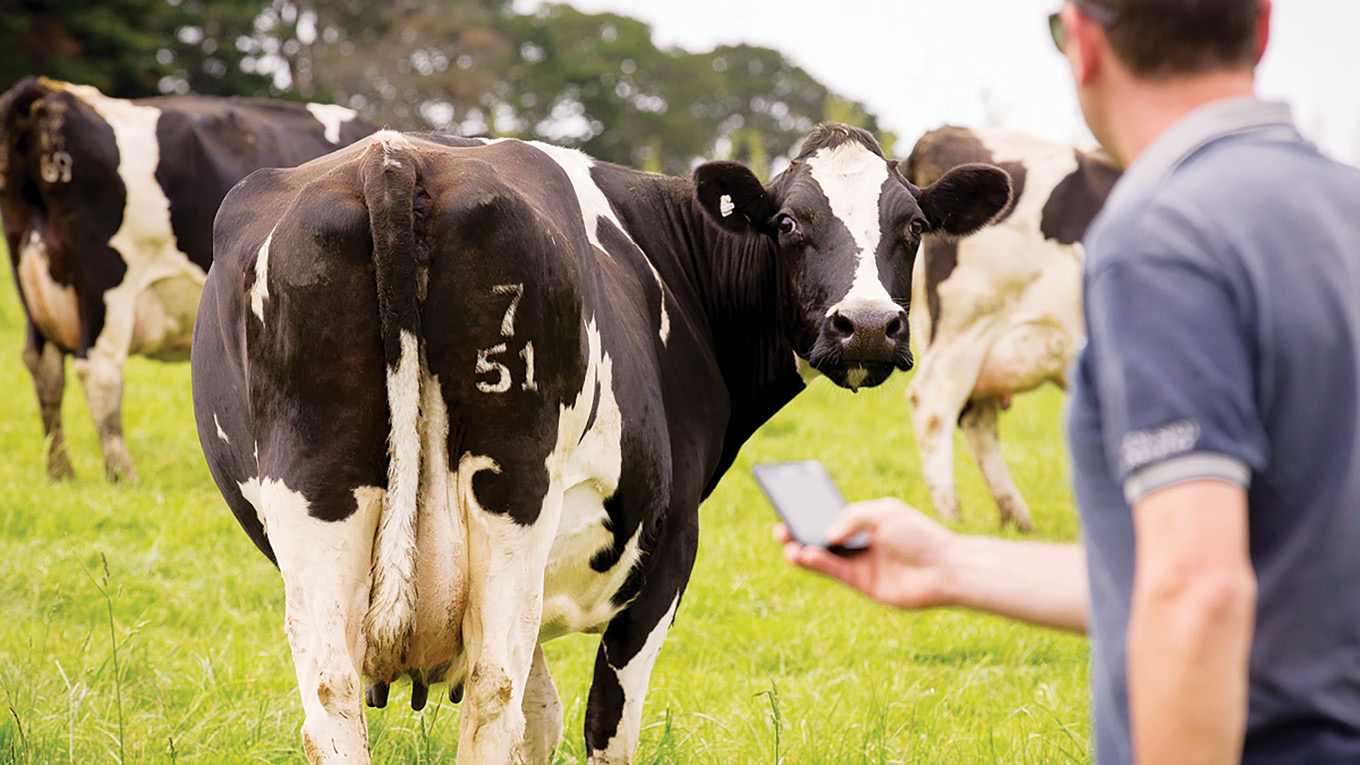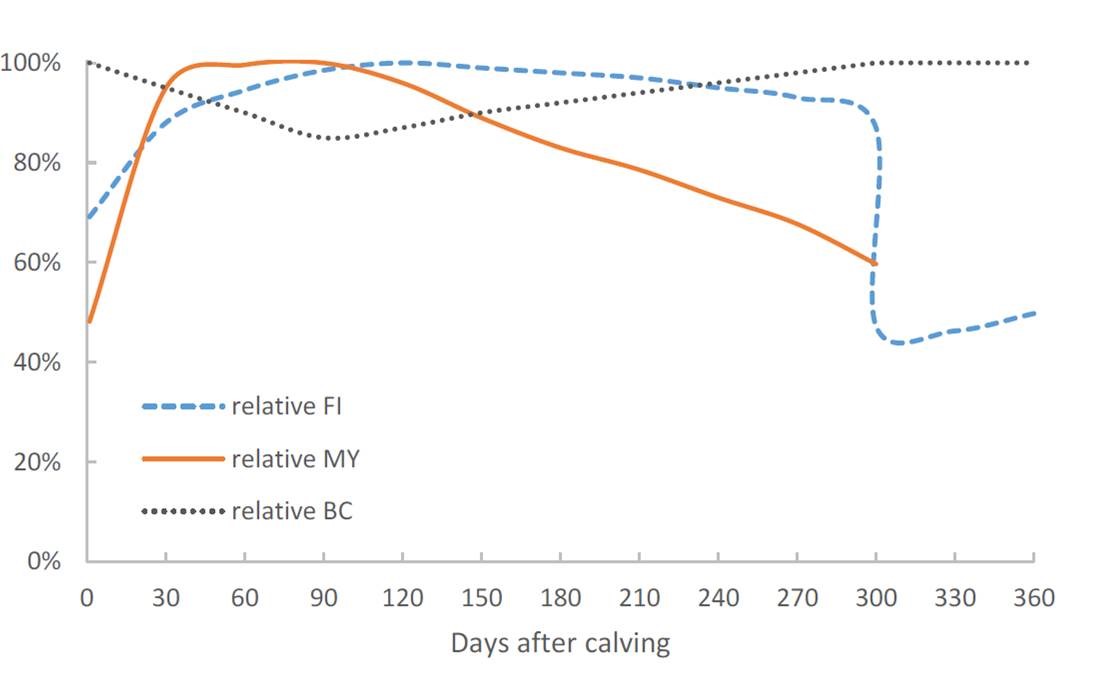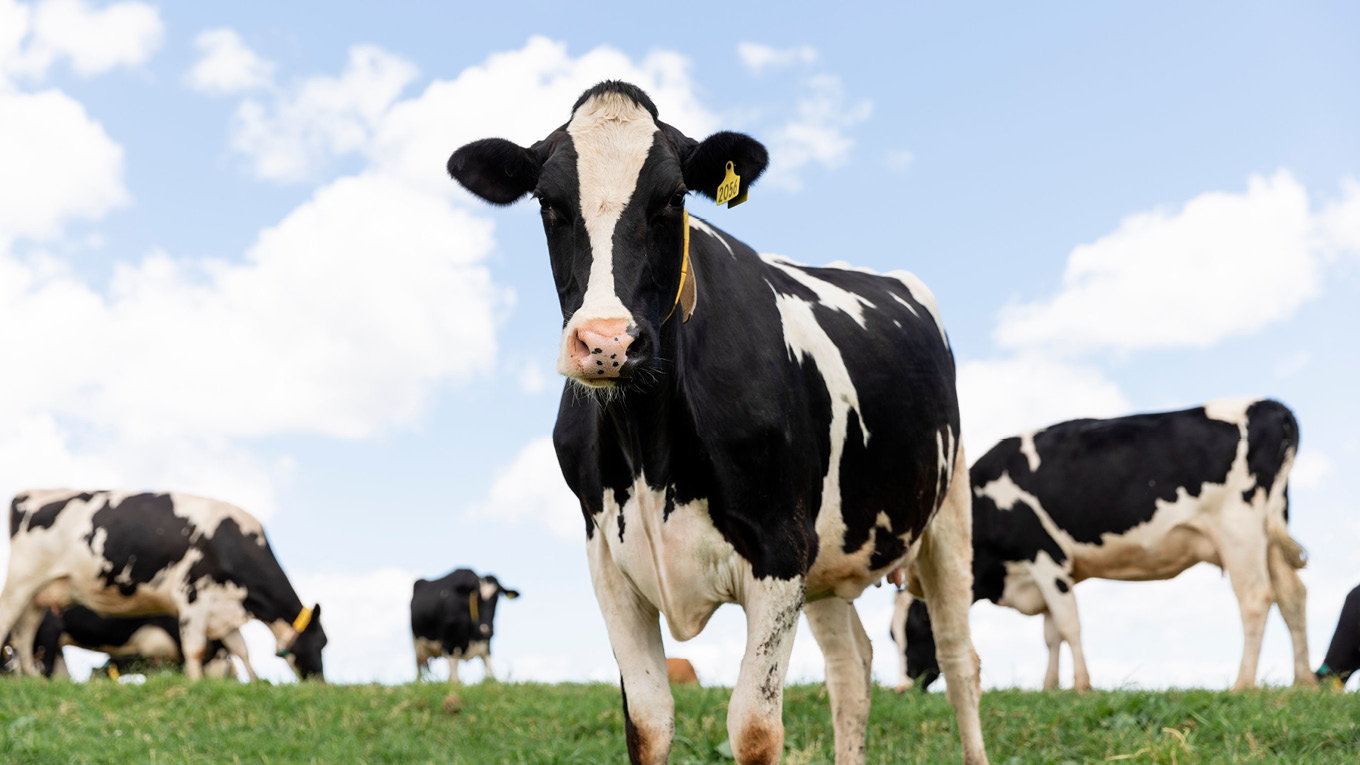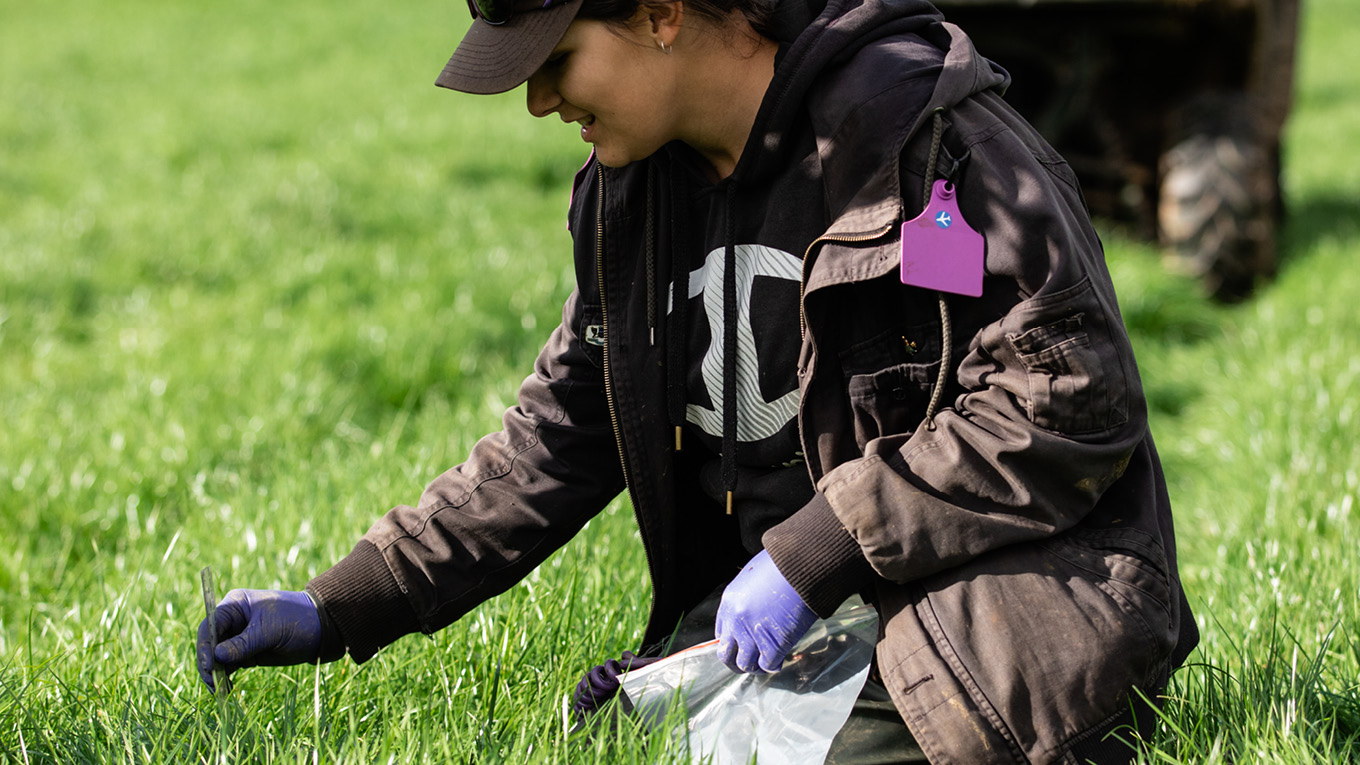Nutrition in Early Lactation
Every stage of lactation presents its own particular challenges when it comes to feeding dairy cows. However, feeding during the first three months after calving – the early lactation period – can be particularly challenging.
There are a number of factors for dairy farmers to take into account when feeding dairy cows in the early lactation stage.
Feeding early lactation cows starts before calving
Optimising nutrition for cows in the early lactation stage needs to start well before calving.
In recent years there has been increasing emphasis on nutritional management during the pre-calving transition period – the last 21 days before calving – in order to minimise disruption during the switch from a heavily pregnant dry cow to a newly lactating cow.
There are a number of nutritional aims in the transition period:
- Minimise ruminal disruption with the rapid introduction of concentrates in the diet
- Minimise macro-mineral deficiencies leading to milk fever and other metabolic diseases
- Minimise fat mobilisation disorders leading to ketosis, fatty liver or pregnancy toxaemia
- Avoid immune suppression due to inadequate supply of energy, protein and/or trace elements
More information on feeding during the transition period is available on the transition cow management page.
Changes in feed intake and cow condition
After calving, dairy cows undergo a distinct lag in feed intake capacity compared to energy demand to support lactation. This is known as negative energy balance, which can typically last up to three months. As a result, cows lose weight and body condition in the first months of lactation which has to be restored in mid to late lactation. This relationship is shown in Figure 1.
Excessive loss of condition in early lactation leads to poor reproductive performance and therefore needs to be carefully managed. The target herd average body condition scores at calving is 5.0 and no less than 4.5 at two weeks before the mating start date.
More information regarding body condition scores is available on the Body Condition Scoring page.
Nutrient recommendations
Given the lag in feed intake capacity during early lactation, energy density of the diet is a crucial factor in supporting milk production while limiting loss of body condition. A target energy density of 11.5 to 12.0 megajoules of metabolisable energy per kilogram of feed dry matter (MJ ME/kg DM) is desirable.
Total ME intake should be 190 to 240 MJ per day (Table 1) for a typical Australian dairy cow in early lactation producing 6,000 to 8,000 litres per lactation (26 to 34 litres of milk per day).
Table 1: Nutrient recommendations for early lactation cows producing 6,000 to 8,000 litres per lactation.
| Nutrient | Target in early lactation |
|---|---|
| Metabolisable energy (MJ/day) | 190 to 240 |
| Energy density (MJ ME/kg Feed DM) | 11.5–12.0 |
| Crude protein % | 16 to 19 |
| Metabolisable protein (grams per day) | 1600 to 2100 |
| Neutral detergent fibre (NDF) | 32% to 36% |
| Physically effective NDF (% of total NDF) | 70 to 75 |
| Starch % | 18-24* |
| Sugar % | 6-8 |
| Crude fat % | 4-5 |
| Calcium % | 0.8-1.0 |
| Phosphorus % | 0.4 |
| Magnesium % | 0.3 |
*Safe starch levels vary inversely with the speed of starch degradability. Dairy farmers should seek advice from a nutritionist if unsure about the optimum level.
A typical dairy cow also needs 1,600 to 2,100 grams per day of metabolisable protein (MP). Unlike the ME content of a feed, the MP content of a feed cannot be found on any given feed lab report. Instead, MP supply and demand needs to be calculated taking into account the crude protein (CP) content of the diet, the rumen degradability of CP, the level of feed intake, the type of energy sources fed and a number of other factors.
Such calculations are complex and are easiest made with the help of computer programs, such as Rumen8 (see below). Typically, 70% of MP is supplied by rumen microbes and 30% by feed protein that has escaped breakdown by rumen bugs.
Another crucial nutrient for all ruminants is fibre, which is essential to maintain good rumen health and therefore good animal health and production. Feed fibre is analysed in feed labs as neutral detergent fibre (NDF).
There is an inverse relationship between NDF content of a feed and its ME content. In 250 Australian dairy feeds containing 10% to 80% NDF, the ME content declined from 14.0 to 7.5 MJ per kg DM, with a decline of just under 1 MJ (0.94 MJ/kg DM) for every 10% unit increase in NDF content.
Wheat grain is a typical high ME/low NDF feed (ME 13 MJ, NDF 13%), while wheat straw is a typical low ME/high NDF feed (ME 6 MJ, NDF 79%). High-quality grazed pasture is intermediate, with a typical ME value of 11 MJ and NDF content of 40% to 45%.
Feeding the correct level of starch in the diet
High ME/low NDF feeds are often high in easily digested carbohydrates such as starch and/or sugar, or are high in fat content. All of these high density nutrients can cause havoc with a healthy rumen if supplied in excess relative to fibre. For this reason, it is crucial to balance the supply of NDF with starch, sugar and fat to maintain good rumen health and avoid any degree of rumen acidosis.
Suggested levels of dietary NDF, starch, sugar and other nutrients are given in Table 1. It is recommended that early lactation diets are formulated to contain 32 to 36% NDF with 18% to 24% starch and 6% to 8% sugar. The physical effectiveness of NDF, or the extent to which NDF causes the animal to ruminate to produce saliva to maintain rumen pH, is another important factor. A suggested target for physically effective NDF is 70% to 75%.
Starch varies widely between feeds in its speed and extent at which it can be broken down in the rumen. Wheat starch is quickly broken down and is therefore classed as a ‘hot feed’ which can easily lead to subclinical acidosis. On the other hand, research has shown maize starch is more slowly available and less likely to cause subclinical acidosis.
For diets containing high levels of wheat, 34% NDF and 18% starch is recommended. For diets containing barley, the safe starch level may be somewhat higher and higher again for maize starch.
The forage source, which provides all of the physically effective NDF in the diet, is another important factor that will influence the effect of starch on rumen health. When starchy concentrates are combined with lush ryegrass low in NDF (less than 40%) and high in sugar, it is more likely to result in subclinical acidosis than when the same concentrate is combined with more fibrous ryegrass with more than 45% NDF and a lower sugar content.
How starchy concentrates are fed also matters greatly. Feeding large amounts of concentrates twice a day during milking has a much harsher impact on rumen health and places greater limits on the level of starch that can be included in the diet. On the other hand, where much or all starch-based concentrate is fed in a partial or total mixed ration with forages, the rate of consumption of starchy feeds is slowed down considerably, permitting higher levels of total starch in the diet.
Regular feed testing is recommended to develop an understanding of changes in nutrient profiles in feeds through the seasons. Regular reviews of animal performance will also be needed to maintain an appropriate balance between fibre and starch. This will vary with individual farms depending on circumstances and goals, seasonal conditions and economic factors, among other things.
Dietary fat is the most energy-dense feed source available (typically 36 MJ/kg DM), which makes it tempting to supplement early lactation dairy cows with fat to counter the lag in feed intake capacity. However, diets that are too high in fat content will depress the health and activity of rumen bugs, which in-turn can reduce feed intake, lower the supply of MP and has been found to depress milk protein output. It is therefore recommended not to exceed a total dietary fat content of 5%.
Macro minerals
The recommended levels for calcium, phosphorus and magnesium in the diet for early lactation dairy cows are shown in Table 1. Calcium demand is rarely met by a diet of pasture, which typically contains only 0.5% calcium in DM, and grain, which typically contains only 0.1% calcium in DM or less.
Supplementation with ground limestone is normally the most cost effective way to boost intake of calcium for good animal health and production. In contrast, requirements for phosphorus are often met by a diet of pasture and concentrates and supplementation of these nutrients is typically not required during early lactation.
Magnesium requirements vary greatly depending on the composition of the diet. This will be determined by individual circumstances, which need to be assessed regularly depending on the farm and the season.
Trace nutrients
In addition to the main nutrients, the trace nutrients in dairy cow diets also need to be considered. Trace nutrients are named so because they are required in trace amounts of milligrams per day or less.
The main trace nutrients to consider are zinc, copper, manganese, selenium, iodine, cobalt, and the vitamins (A, D and E). These trace nutrients are frequently supplied in the form of a premix which can be added to concentrate at the farm or in the feed mill. Farmers are advised to follow manufacturer recommendations for rates of inclusion.
Diet formulation software
While the above guidelines can help with the formulation of well-balanced dairy cow diets, economic factors of individual farms will dictate what is feasible. Feeding lactating cows is a major business cost on all Australian dairy farms. Most farms will benefit from more regularly assessing the adequacy and cost effectiveness of cow diets. This is a complex task that can be greatly helped by the use of computer programs to find the right balance between nutritional perfection and economic viability.
A number of computer programs are available for this purpose. Dairy Australia has co-funded the development of the Rumen8 program, which is a free software application that allows farmers and consultants to more easily manage dairy cow and heifer diets to increase production and reduce costs.
More information about the program is available on the Rumen8 website.






